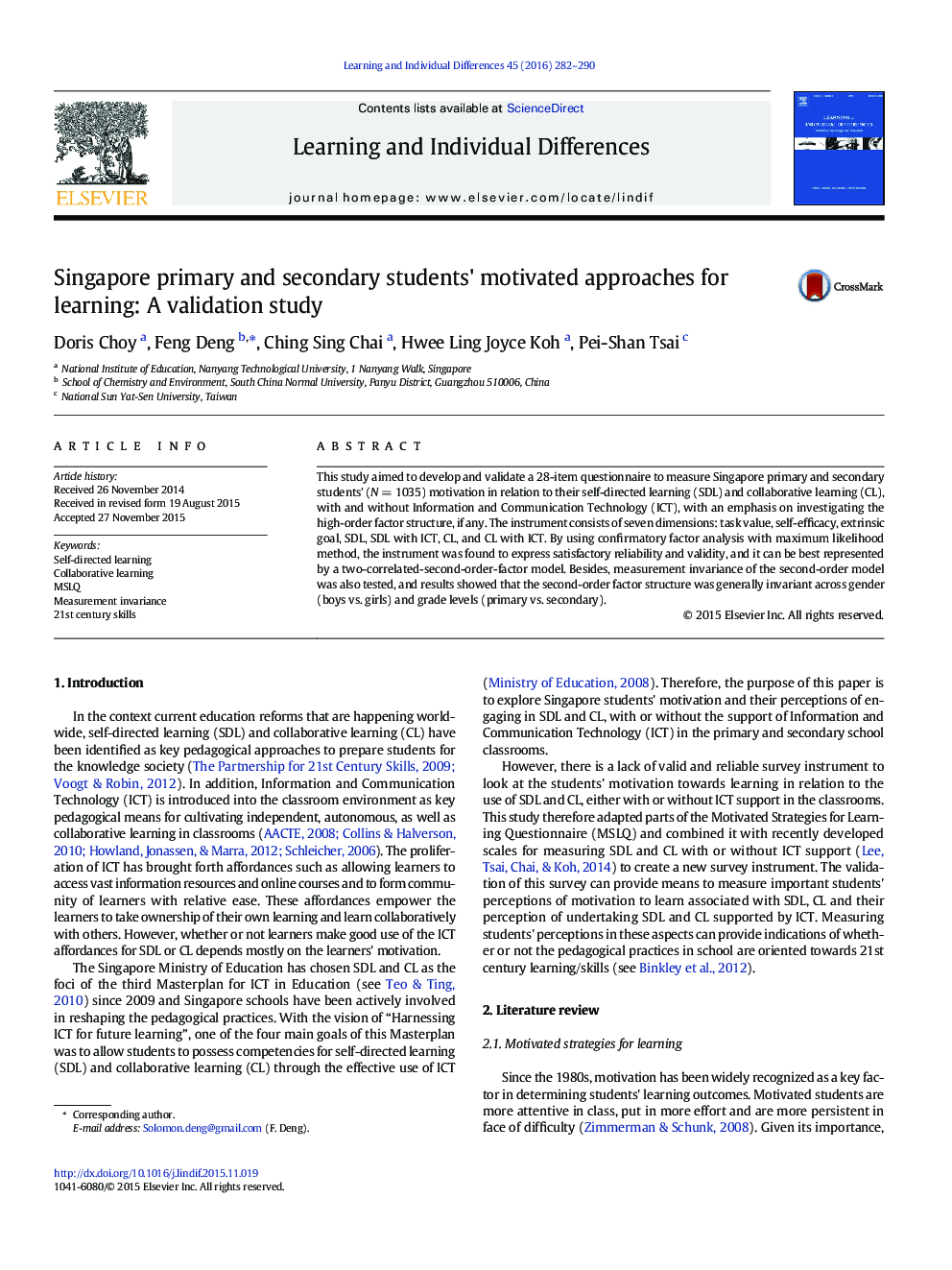| کد مقاله | کد نشریه | سال انتشار | مقاله انگلیسی | نسخه تمام متن |
|---|---|---|---|---|
| 364531 | 621073 | 2016 | 9 صفحه PDF | دانلود رایگان |
• We validate a seven-scale instrument measuring students' motivation and learning approach.
• The seven scales can be explained by two correlated second-order factors.
• The second-order factor structure is generally invariant across gender.
• The second-order factor structure is generally invariant across grade levels.
This study aimed to develop and validate a 28-item questionnaire to measure Singapore primary and secondary students' (N = 1035) motivation in relation to their self-directed learning (SDL) and collaborative learning (CL), with and without Information and Communication Technology (ICT), with an emphasis on investigating the high-order factor structure, if any. The instrument consists of seven dimensions: task value, self-efficacy, extrinsic goal, SDL, SDL with ICT, CL, and CL with ICT. By using confirmatory factor analysis with maximum likelihood method, the instrument was found to express satisfactory reliability and validity, and it can be best represented by a two-correlated-second-order-factor model. Besides, measurement invariance of the second-order model was also tested, and results showed that the second-order factor structure was generally invariant across gender (boys vs. girls) and grade levels (primary vs. secondary).
Journal: Learning and Individual Differences - Volume 45, January 2016, Pages 282–290
